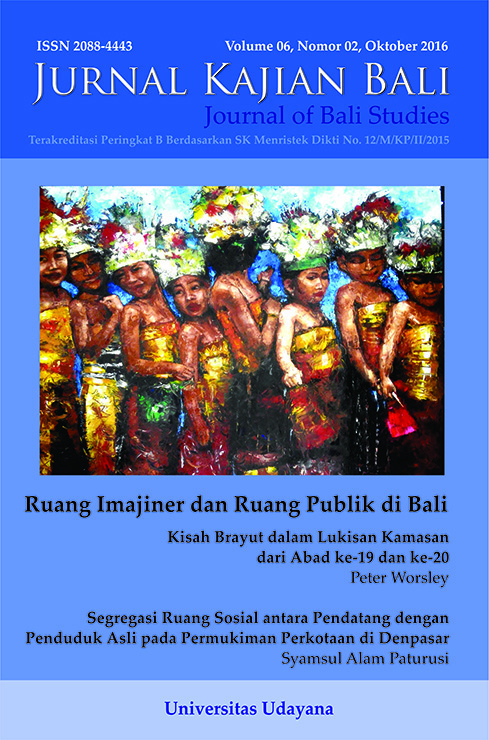Kisah Brayut dalam Lukisan Kamasan dari Abad ke-19 dan ke-20
Abstract
In this article I discuss a Kamasan painting in the Charlie Sayer’s collection in the Tropenmuseum in Amsterdam. I begin by explaining the way in which the painter has organised the design of his painting to tell the story of the Brayuts, a commoner Balinese family, and to draw attention to important aspects of family life in the nineteenth and early twentieth centuries. In the lower part of the painting we see the Brayut family celebrating the festivals of Galungan and Kuningan and in the topmost sequence of scenes the circumstances in which the head of the family, Pan Brayut, abdicates his religious and customary duties on behalf of the family in favour of his youngest son Ketut Subaya. I argue further that the painter draws attention to a radical distiction between the roles of men and women in family life in this period and to his manifest interest in illustrating the virtue of Pan Brayut, the male head of the family.Downloads
Download data is not yet available.
Published
2016-10-24
How to Cite
WORSLEY, Peter.
Kisah Brayut dalam Lukisan Kamasan dari Abad ke-19 dan ke-20.
Jurnal Kajian Bali (Journal of Bali Studies), [S.l.], v. 6, n. 2, p. 1-32, oct. 2016.
ISSN 2580-0698.
Available at: <https://ojs.unud.ac.id/index.php/kajianbali/article/view/24891>. Date accessed: 25 nov. 2025.
Section
Articles
Keywords
Kamasan painting, Balinese family, Brayut story, Charlie Sayer’s collection

This work is licensed under a Creative Commons Attribution 4.0 International License.



















